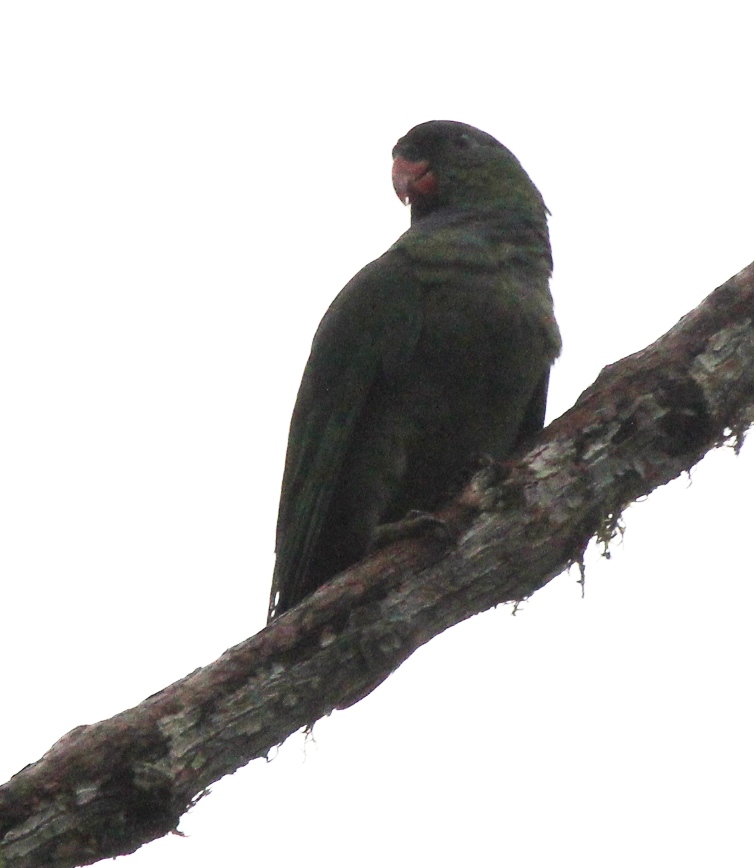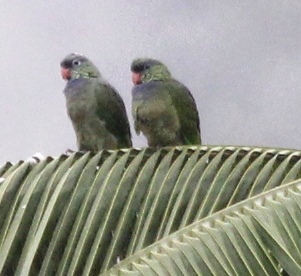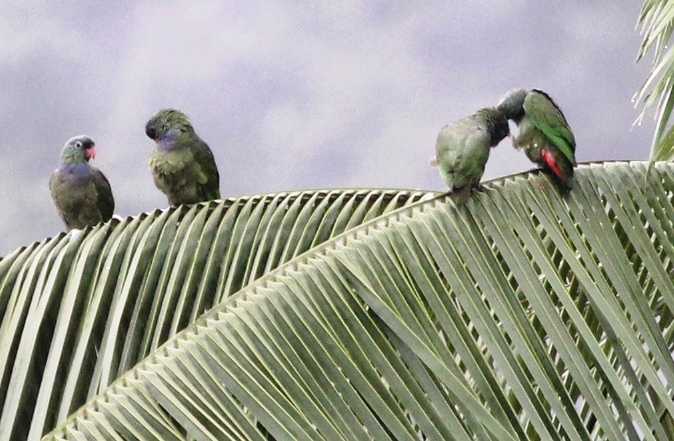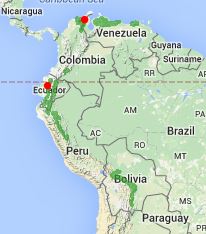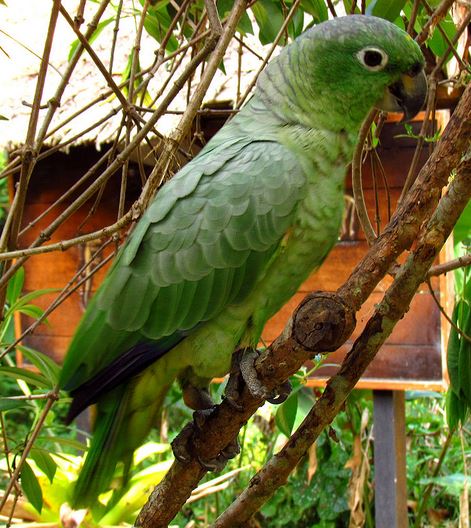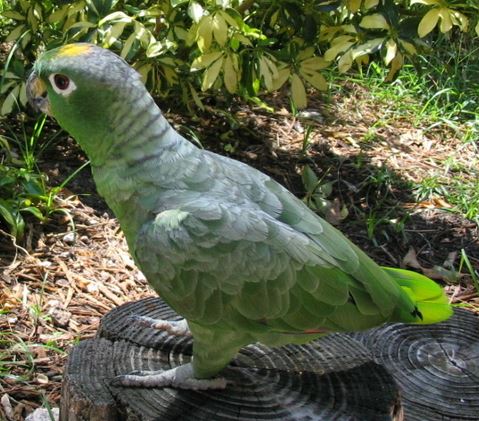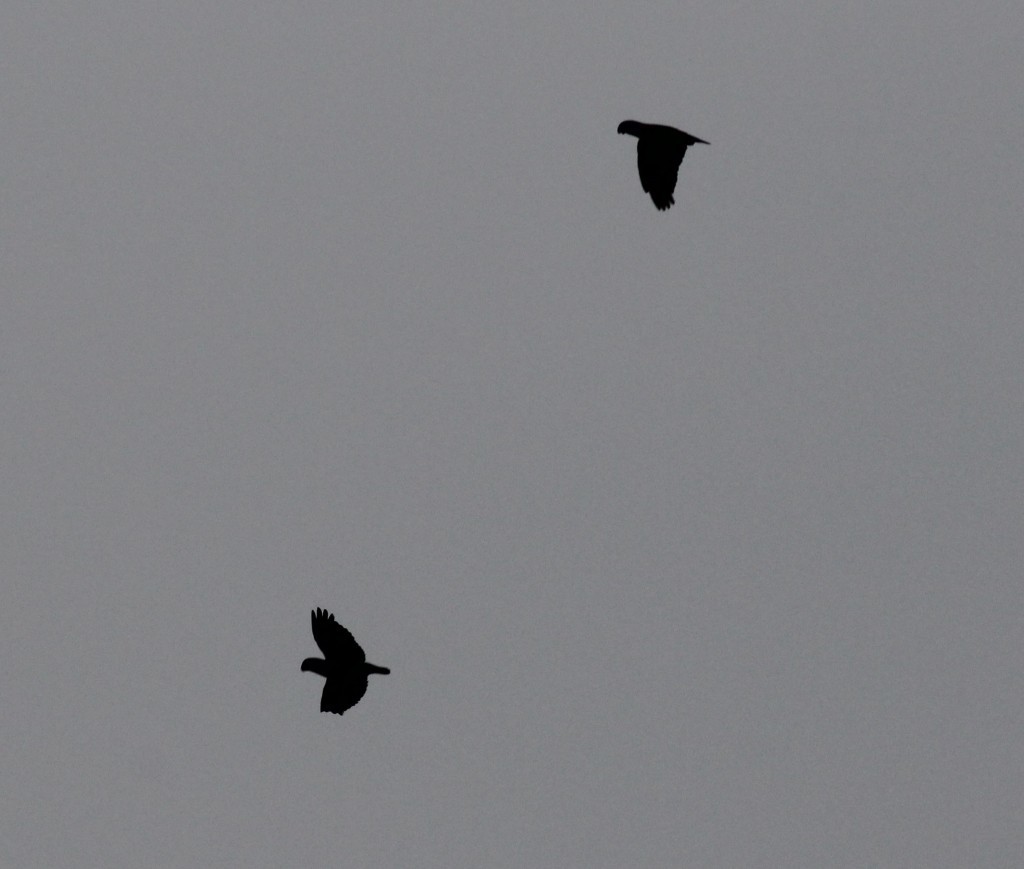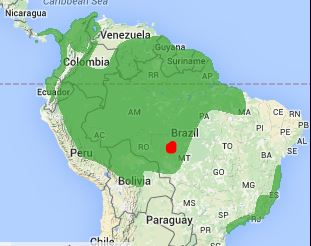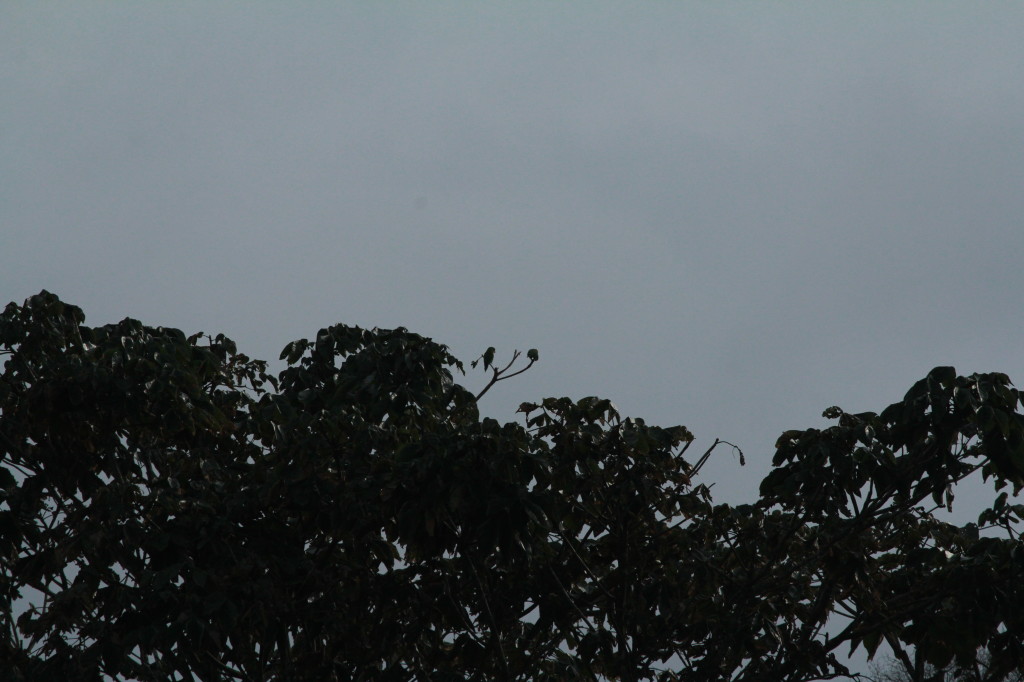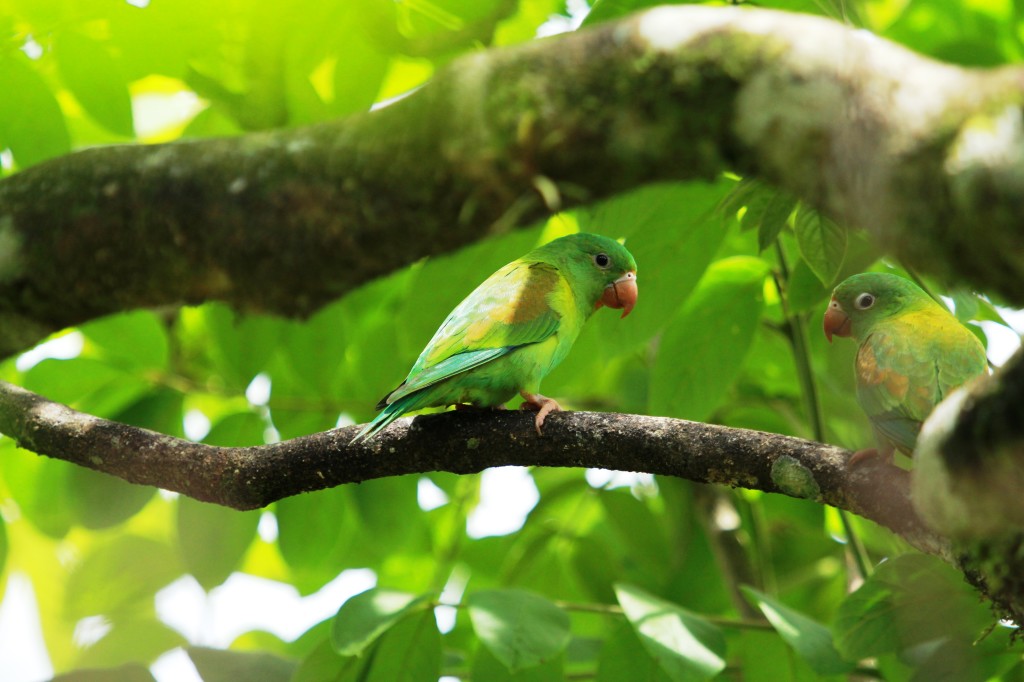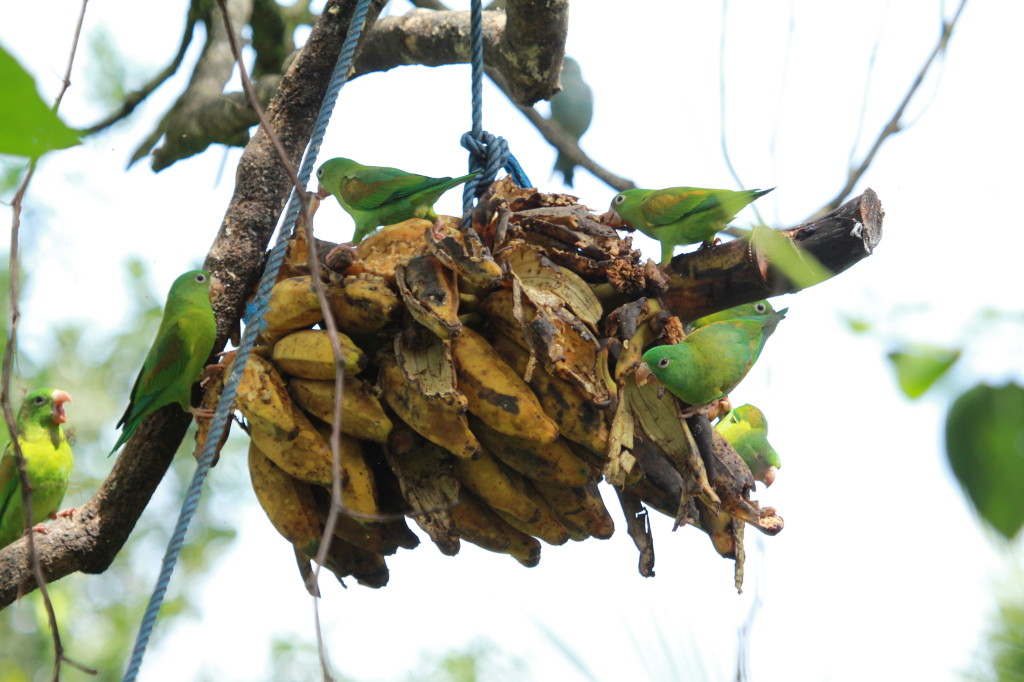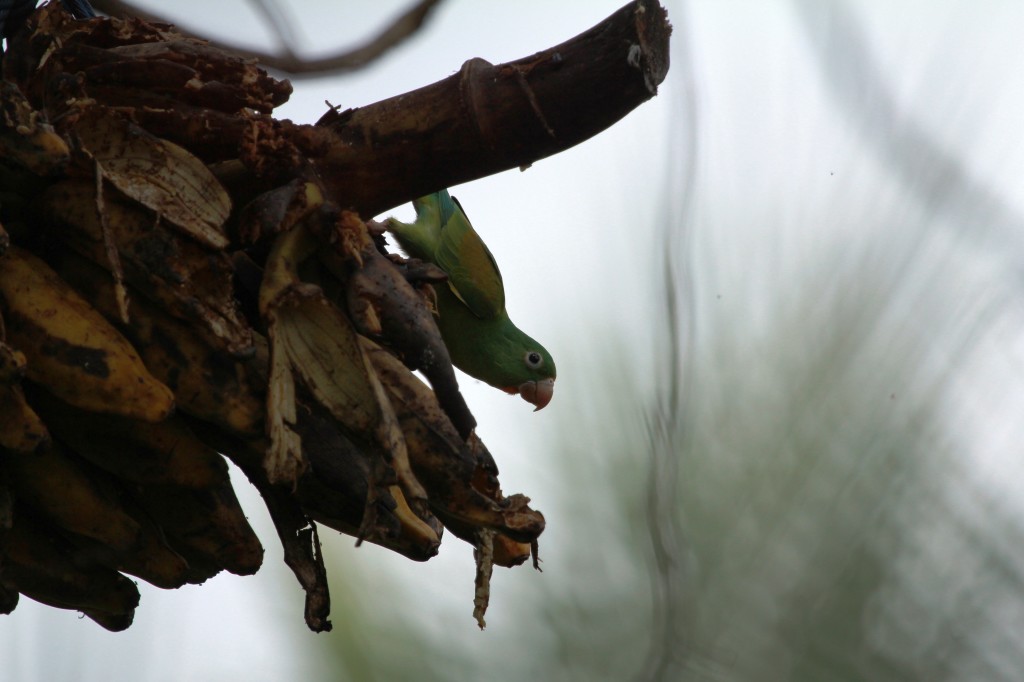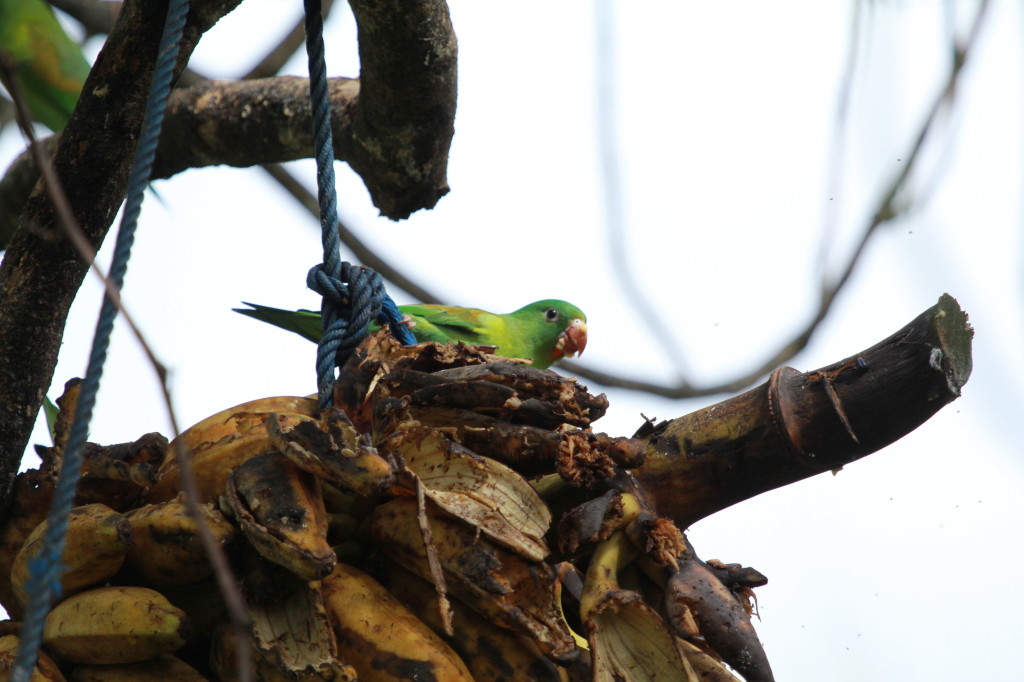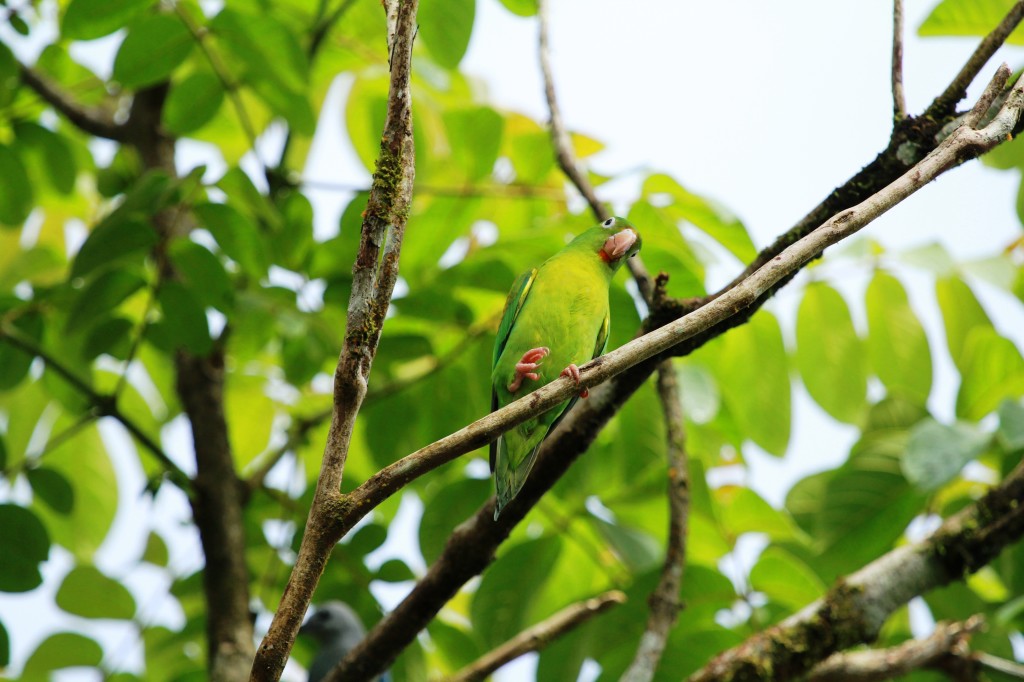Blue-and-yellow Macaw – Ara ararauna
Military Macaw – Ara militaris
Great Green Macaw – Ara ambigua
Scarlet Macaw – Ara macao
Red-and-green Macaw – Ara chloroptera
Chestnut-fronted Macaw – Ara severa
Red-bellied Macaw – Orthopsittaca manilata
Yellow-eared Parrot – Ognorhynchus icterotis
Blue-crowned Parakeet – Aratinga acuticaudata
Pacific Parakeet – Aratinga strenua
Scarlet-fronted Parakeet – Aratinga wagleri
White-eyed Parakeet – Aratinga leucophthalmus
Dusky-headed Parakeet – Aratinga weddellii
Brown-throated Parakeet – Aratinga pertinax
Golden-plumed Parakeet – Leptosittaca branickii
Sinu Parakeet – Pyrrhura subandina
Todd’s Parakeet – Pyrrhura caeruleiceps
Painted Parakeet – Pyrrhura picta
Santa Marta Parakeet – Pyrrhura viridicata
Maroon-tailed Parakeet – Pyrrhura melanura
Flame-winged Parakeet – Pyrrhura calliptera
Barred Parakeet – Bolborhynchus lineola
Rufous-fronted Parakeet – Bolborhynchus ferrugineifrons
Green-rumped Parrotlet – Forpus passerinus
Blue-winged Parrotlet – Forpus xanthopterygius
Spectacled Parrotlet – Forpus conspicillatus
Dusky-billed Parrotlet – Forpus sclateri
White-winged Parakeet – Brotogeris versicolurus
Orange-chinned Parakeet – Brotogeris jugularis
Cobalt-winged Parakeet – Brotogeris cyanoptera
Tui Parakeet – Brotogeris sanctithomae
Lilac-tailed Parrotlet – Touit batavica
Scarlet-shouldered Parrotlet – Touit huetii
Blue-fronted Parrotlet – Touit dilectissima
Sapphire-rumped Parrotlet – Touit purpurata
Spot-winged Parrotlet – Touit stictoptera
Black-headed Parrot – Pionites melanocephala
White-bellied Parrot – Pionites leucogaster
Brown-hooded Parrot – Pyrilia haematotis
Rose-faced Parrot – Pyrilia pulchra
Orange-cheeked Parrot – Pyrilia barrabandi
Saffron-headed Parrot- Pyrilia pyrilia
Rusty-faced Parrot – Hapalopsittaca amazonina
Indigo-winged Parrot – Hapalopsittaca fuertesi
Short-tailed Parrot – Graydidascalus brachyurus
Blue-headed Parrot – Pionus menstruus
Red-billed Parrot – Pionus sordidus
Speckle-faced Parrot – Pionus tumultuosus
Bronze-winged Parrot – Pionus chalcopterus
Dusky Parrot – Pionus fuscus
Red-lored Amazon – Amazona autumnalis
Festive Amazon – Amazona festiva
Yellow-crowned Amazon – Amazona ochrocephala
Orange-winged Amazon – Amazona amazonica
Scaly-naped Amazon – Amazona mercenaria
Mealy Amazon – Amazona farinosa
Red-fan Parrot – Deroptyus accipitrinus
